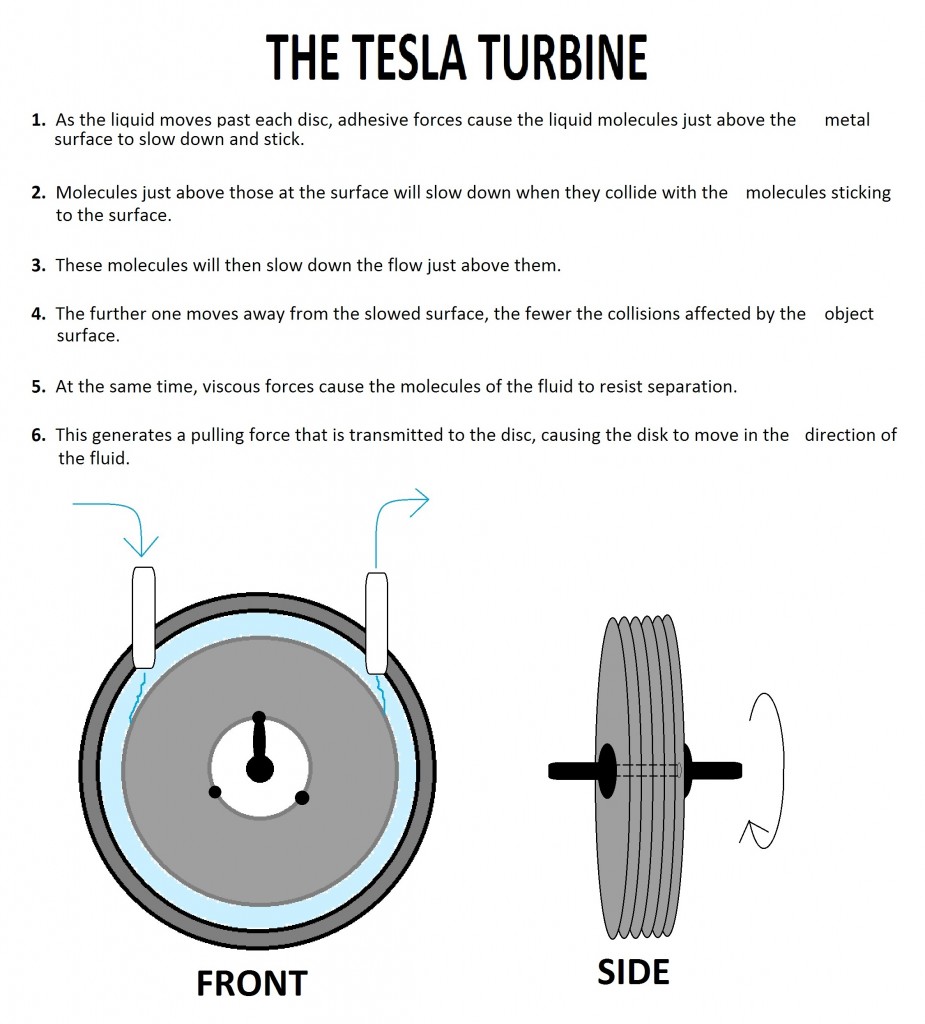Tesla Turbine
February 24, 2013
The word turbine in this situation can be misleading. Most turbines are designed with a shaft and blades, and the blades are usually what absorbs the force of wind, water, or steam in order to turn a shaft and rotor. In this case, the tesla turbine is a bladeless turbine that instead is constructed from a series of parallel discs connected within a sealed chamber. However, like all other turbines, the tesla turbine is used to convert mechanical energy into another form of energy, usually electricity. So the tricky part here is to understand how this thin metal discs in the tesla turbine can spin without having any blades at all. The reason they spin can be explained through two fundamental properties of liquid: adhesion and viscosity. Adhesion is explained as the tendency of dissimilar molecules of a liquid to cling together due to attractive forces. Viscosity on a liquid is the resistance of the substance to flow. These two properties work together in the Tesla turbine to transfer mechanical energy from the fluid to the rotor or the other direction. Let’s take a look at how: The thin layer of liquid that interacts with the disc surface in this way is called the boundary layer, and the interaction of the fluid with the solid surface is called the boundary layer effect. The result of this effect, the propelling fluid continues along a rapidly accelerated spiral path along the disc face until it reaches it’s suitable exit. Because the liquid moves in natural paths of least resistance, free from the constraints and disruptive forces caused by vanes or blades, it experiences gradual changes in velocity and direction. This means more energy is delivered to the turbine. Indeed, Tesla claimed a turbine efficiency of 95 percent, far higher than other turbines of the time. To purchase a Tesla Turbine go here: The Tesla Turbine, as you may have guessed, was patented by Nikola Tesla in 1913. Tesla had nearly 300 patents and countless ideas and inventions, but frequently referenced his particular turbine innovation as one of his most important.
The Tesla Turbine, as you may have guessed, was patented by Nikola Tesla in 1913. Tesla had nearly 300 patents and countless ideas and inventions, but frequently referenced his particular turbine innovation as one of his most important.